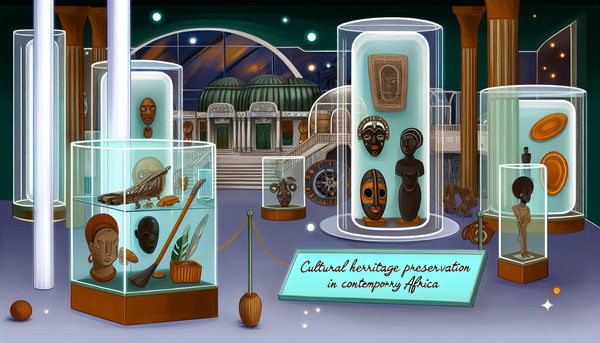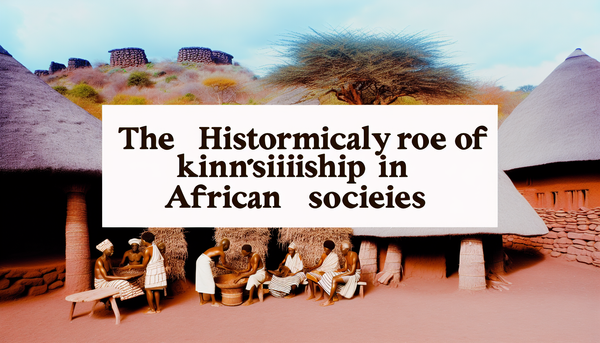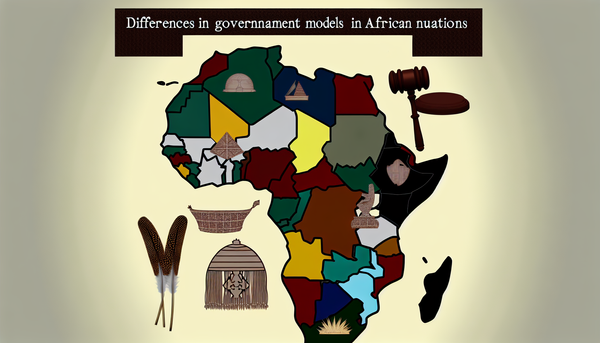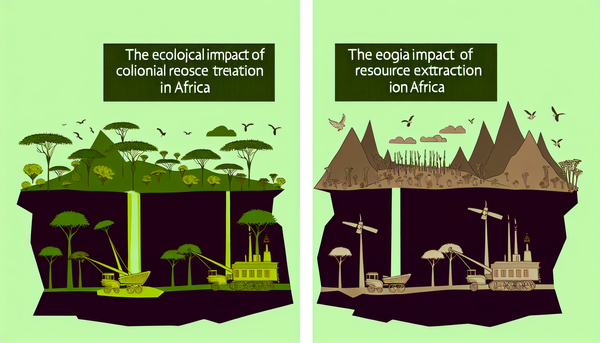The Role of Music and Dance in African History
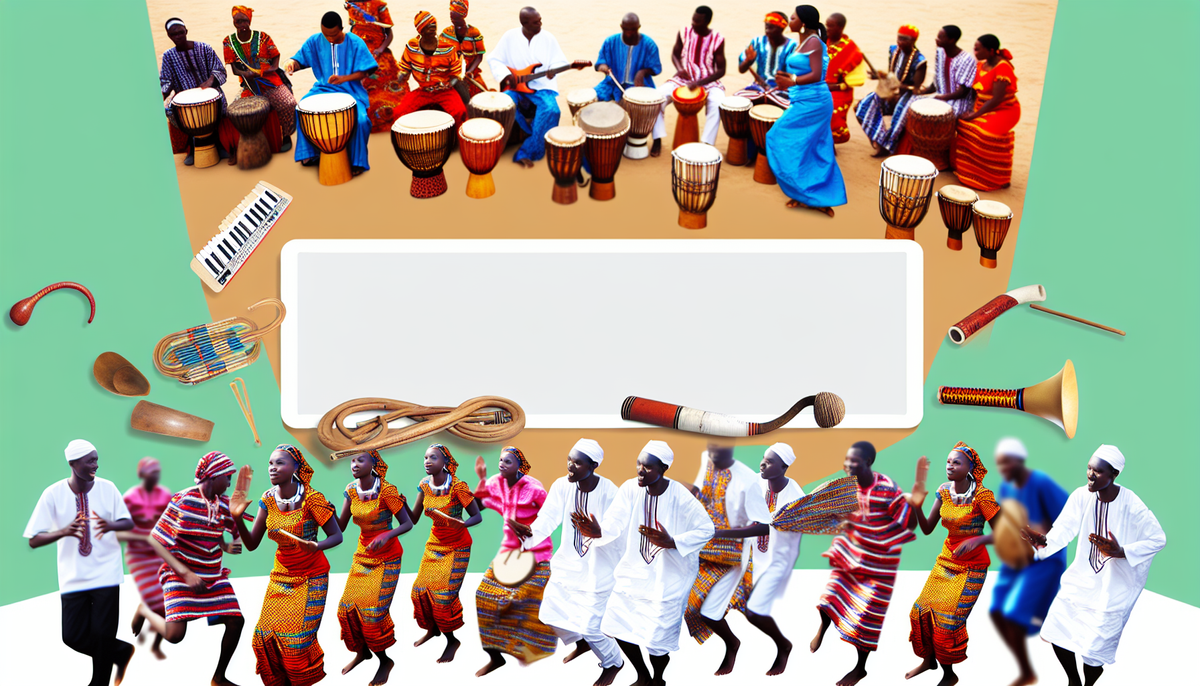
Origins and Early Influences of African Music and Dance
The roots of African music and dance date back to ancient times, with diverse cultures across the continent developing unique musical traditions. These early forms of expression were deeply intertwined with daily life, rituals, and storytelling, serving as a means of communication and cultural preservation. The rhythmic patterns and melodies evolved from a blend of influences, including traditional African instruments such as drums, mbiras, and flutes, as well as vocal techniques and communal dances.
Moreover, external interactions with Arab traders, European colonizers, and other neighboring civilizations also played a role in shaping African music and dance practices. These exchanges led to the fusion of different musical styles, introducing new instruments and techniques into the existing traditional framework. The rich tapestry of African musical heritage reflects the history, beliefs, and experiences of diverse communities, showcasing the ingenuity and creativity of its people in harnessing the power of music and dance for expression and connection.
Musical Instruments and Their Historical Significance
African music is characterized by a wide array of traditional instruments, each with its unique sound and cultural importance. These instruments have been integral to the development of African music and dance, shaping the rhythms and melodies that define the continent's musical landscape. From the resonant sounds of the djembe drum to the intricate melodies of the kora, each instrument carries a deep historical significance, representing the traditions and stories of its people.
The historical significance of these instruments extends beyond their musical capabilities, with many holding spiritual or ceremonial importance in African societies. For example, the talking drum, known for its ability to mimic human speech patterns, was often used to convey messages across long distances and communicate with ancestral spirits. Similarly, the ngoni, a traditional lute instrument, was associated with storytelling and oral traditions, serving as a vessel for passing down cultural knowledge through generations.
Overall, the diversity and richness of African musical instruments reflect the vibrant cultural tapestry of the continent, highlighting the interplay between music, history, and identity in African societies.
Rituals and Ceremonies: Integrating Music and Movement
In African cultures, music and dance play a central role in rituals and ceremonies, serving as powerful forms of expression and communication. These practices are deeply embedded in the fabric of communities, marking important life events, spiritual ceremonies, and seasonal celebrations. The combination of rhythmic beats, dynamic movements, and symbolic gestures creates a sensory experience that transcends mere entertainment, connecting individuals to their cultural heritage and spiritual beliefs.
Music and dance are used to invoke ancestral spirits, honor deities, and convey emotions that words alone cannot express. Through synchronized movements and harmonious melodies, participants in rituals and ceremonies establish a collective consciousness, fostering unity and cohesion within the community. The performance of specific dances and songs is often accompanied by elaborate costumes, symbolic props, and intricate choreography, each element serving to enhance the overall storytelling and meaning behind the ritual.
Overall, the integration of music and movement in African rituals and ceremonies serves as a powerful reminder of the interconnectedness between the physical, spiritual, and social realms in traditional African societies.
Impact of Music and Dance on Social Structures
Music and dance in Africa have played a transformative role in shaping social structures and community dynamics. These cultural forms serve as powerful tools for communication, storytelling, and social cohesion, uniting individuals across diverse backgrounds and generations. Through shared musical experiences, communities develop a sense of identity and belonging, strengthening bonds and fostering a collective spirit.
In many African societies, music and dance are used to reflect social hierarchies, rites of passage, and power dynamics within the community. Certain musical instruments or dance styles may be reserved for specific social classes or ceremonial occasions, highlighting the interconnectedness between artistic expression and societal norms. Additionally, traditional songs and dances often contain moral lessons, historical narratives, and cultural values that guide behavior and reinforce community norms.
The rhythmic patterns and movements of music and dance provide a rhythmic framework for social interaction, communication, and conflict resolution within African societies. Whether in village gatherings, religious ceremonies, or celebratory events, the presence of music and dance serves as a unifying force that transcends individual differences and fosters a sense of collective belonging.
Colonial Influence and Cultural Exchange
The colonial period in Africa brought significant changes to the continent's music and dance traditions, as European powers imposed their cultural practices and disrupted existing systems. While colonialism had a lasting impact on African societies, it also led to a complex exchange of musical styles, instruments, and ideas between African and European cultures.
European colonizers introduced Western musical instruments, such as the piano, violin, and brass instruments, reshaping the soundscapes of African communities. These new instruments were integrated into traditional music ensembles, leading to the emergence of hybrid musical genres that blended African rhythms with European melodies. Additionally, European choral music and hymns influenced vocal techniques and harmonies in African singing styles, creating a fusion of musical expressions.
Conversely, African music and dance traditions also left a mark on European music during the colonial period, with elements of African polyrhythms and call-and-response patterns finding their way into Western music compositions. This cultural exchange contributed to the diversity and richness of global musical traditions, illustrating the resilience and adaptability of African music and dance in the face of colonial influence.
Modern Evolution and Global Influence of African Rhythms
In the modern era, African rhythms continue to captivate global audiences and inspire musicians across diverse genres. The infectious beats and intricate patterns of African music have found their way into popular music styles around the world, influencing everything from jazz and blues to hip-hop and electronic dance music. The integration of African rhythms has added depth and authenticity to contemporary music, contributing to the global appeal of African cultural expressions.
Moreover, African dance styles have also gained recognition on the international stage, with choreographers and dancers drawing inspiration from traditional African movements to create innovative performances that blend cultural heritage with modern aesthetics. The fusion of African rhythms and dance with Western musical elements has resulted in dynamic collaborations and cross-cultural exchanges that transcend geographical boundaries and unite artists from different backgrounds.
As African music and dance continue to evolve and adapt to changing musical landscapes, the influence of African rhythms can be heard in mainstream music markets worldwide, showcasing the enduring legacy and creativity of African artists and musicians.
Preservation Efforts and Revival of Traditional Practices
Amidst the pressures of modernization and globalization, efforts are underway to preserve and revitalize traditional African music and dance practices. Cultural organizations, educational institutions, and local communities are working together to safeguard the rich heritage of African rhythms and movements for future generations. Through documentation, archiving, and cultural exchange programs, traditional songs, dances, and instruments are being preserved as valuable expressions of cultural identity.
In addition to preservation efforts, there is a growing movement to revive and celebrate traditional practices in contemporary contexts. Artists and performers are incorporating traditional elements into their work, creating innovative adaptations that honor the authenticity and integrity of African musical and dance traditions. Festivals, workshops, and performances dedicated to showcasing traditional practices provide platforms for artists to share their knowledge and skills with audiences both locally and globally.
By recognizing the importance of preserving and reviving traditional African music and dance, communities are ensuring that these cultural expressions continue to thrive and evolve in a changing world, reaffirming the enduring significance of African heritage in the global cultural tapestry.
